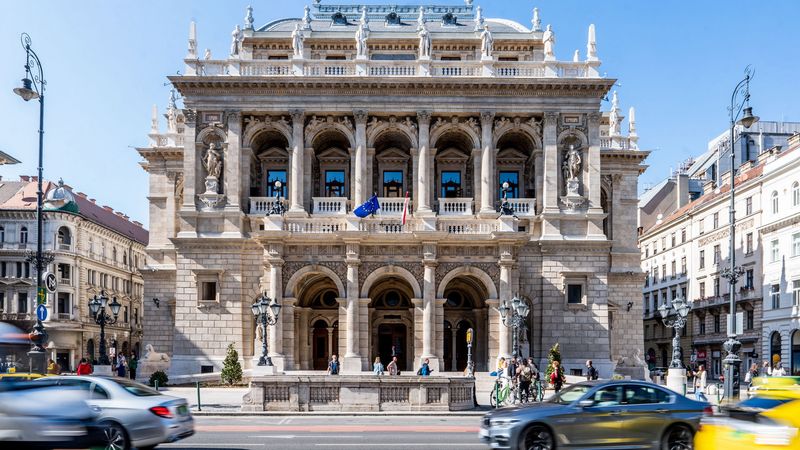
The Neo-Renaissance palace designed by Miklós Ybl has been open to opera and ballet lovers for more than one hundred thirty years. Thousands of tourists visit the building each year to admire one of Budapest’s most important historical monuments.
By the end of the 19th century, the Pest cityscape was basically completed with the construction of Andrássy Avenue (originally called Sugár Avenue), which raised the idea of establishing a dedicated opera building. The new building was especially necessary because the contemporary National Theatre building was increasingly unable to stage dramas while also meeting the requirements of hosting operas. At the behest of Prime Minister Menyhért Lónyay, Bódog Orczy, the Director of the National Theatre, laid out comprehensive plans in 1872 in the form of a submission. The Budapest Public Works Council and even Franz Joseph I, Emperor of Austria and King of Hungary, backed the initiative in 1873. A tendering process was announced, and six architects were invited to participate: Miklós Ybl, Imre Steindl, Antal Skalnitzky, István Linczbauer, and two foreigners: Ferdinand Felmer and Ludwig Bohnstedt. Of the submitted works, the jury overwhelmingly voted to build Miklós Ybl’s (1814–1891) proposal. Frigyes Podmaniczky, the chairman of the tender evaluation committee and the Vice-President of the Budapest Public Works Council, was responsible for the construction program. An important condition was that all work had to be performed by Hungarian artisans, and only Hungarian materials could be used. Miklós Ybl fulfilled the condition with five exceptions: the marble coverings are from Carrara, the granite columns hail from Austria, the oak and cedar materials were imported from Italy, the stage technology was from Vienna, and the chandelier is from Mainz.
The building permit was issued in 1875, but only after the original plan was reworked a number of times, because Franz Josef I only allowed construction with the condition that the Pest opera not exceed the size of the Vienna opera. Ybl therefore did away with the highest level of boxes and reduced the size of the lobby, which had the advantage of giving the building better proportions, as it is almost symmetrical in both directions. However, the basic artistic approach did not change: both the architecture and the decorations intend to express the power of music, the latter with the help of stories from antique mythology.
The opening ceremony was held nine years later, on 27 September 1884, though the celebrations almost ended in scandal. As those present at the re-enactment held in the autumn of 2014 witnessed, the people who gathered for the event wanted to see not just the outside, but also the inside of the building richly decorated with gold, marble, and frescoes, the construction of which cost large amounts of money and taxpayers’ forints. The fact that the original plans to have construction completed in four years were not met only added to the sentiment. Interest was great in the opening ceremony, even though the price of entry was comparable to the cost of two horses – people felt they might not get a second chance to get a good look at the opera. The performance, attended by even Emperor Franz Joseph I, included performing the first act of Bánk Bán (The Viceroy Bánk), the overture to Hunyadi László, and the first act of Lohengrin, conducted by Ferenc Erkel and his son, Sándor Erkel.